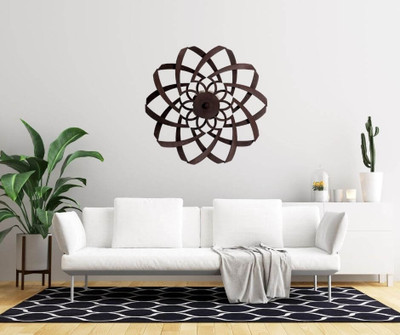You have countless options when it comes to home decor, sculpture and artwork to add some flair to your house, but today we are here to make the case for something wonderfully unique: kinetic sculptures! Kinetic art refers to any artwork that relies on movement as part of its aesthetic and effectiveness. Early examples of the kinetic art movement were often two-dimensional and featured flat, non-literal movement, rather it relied more on the appearance of movement. What we are talking about today when we reference kinetic art is more along the lines of mobiles or figures that are very literally in motion through their natural state of being (perhaps out in the wind) or by some form of motor, spring, pulley, or weight. The latter is often described as “apparent movement” whereby the use of a specific mechanism helps to create or to sustain the movement of the piece.
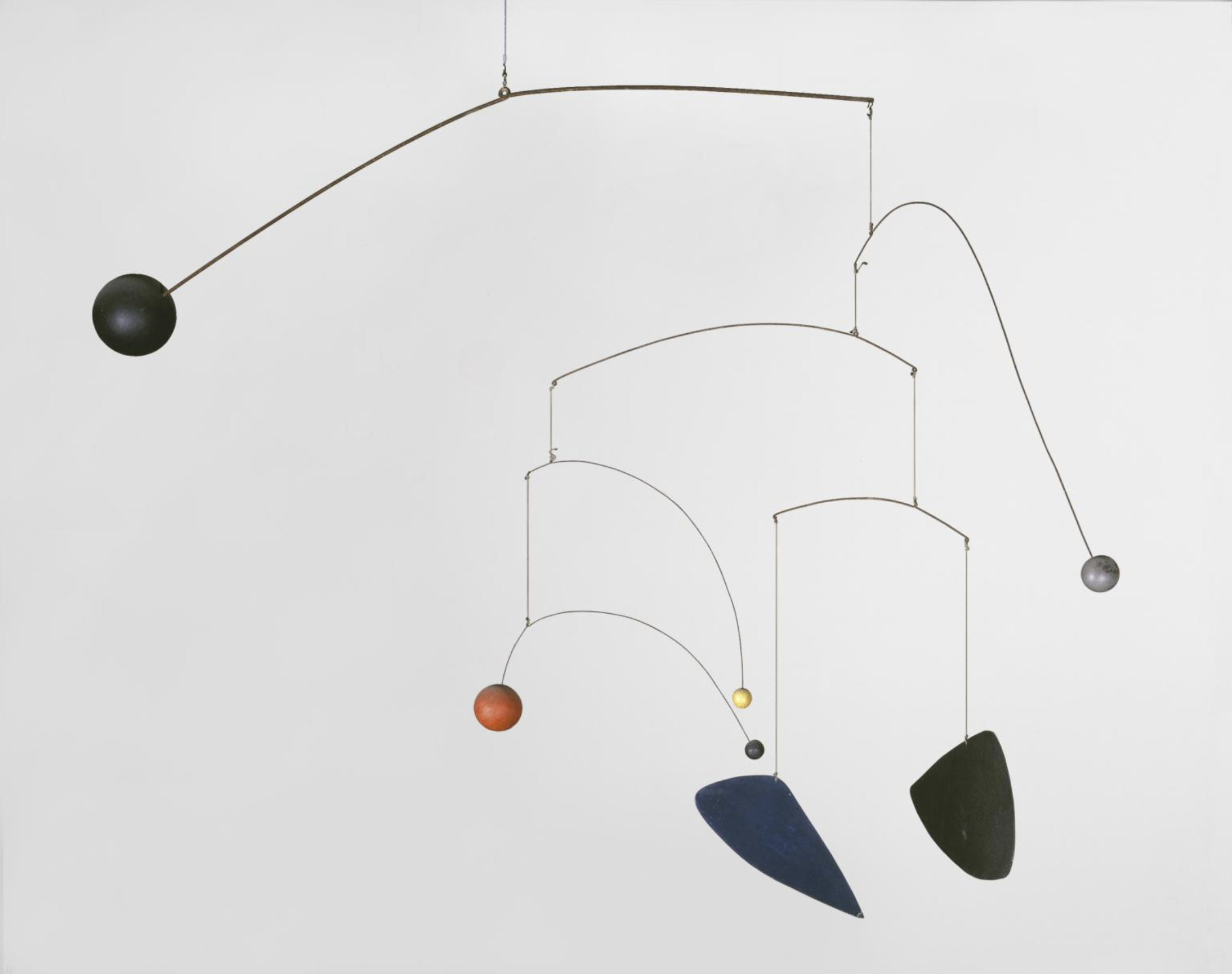 Kinetic art is decidedly more interesting and fun than something static that you put up on your wall and do not think about much thereafter. Kinetic art is literally in motion, it captures our attention immediately and is thus pretty difficult to ignore. There is a reason, after all, that we choose to hang mobiles above babies' beds. We wouldn’t use a child-centric mobile when we design an adult room - it would make a statement, just perhaps not the right one - but when we are designing a room we want it to be somewhere engaging and where we enjoy being and, of course, we want it to be somewhere that others will enjoy being. We want it to be interesting, we want it to be filled with things that encourage conversation, but we also want it to feel warm when we are settling in for an evening alone. What better way to add warmth and interest than an animate piece of artwork on your wall?
Kinetic art is decidedly more interesting and fun than something static that you put up on your wall and do not think about much thereafter. Kinetic art is literally in motion, it captures our attention immediately and is thus pretty difficult to ignore. There is a reason, after all, that we choose to hang mobiles above babies' beds. We wouldn’t use a child-centric mobile when we design an adult room - it would make a statement, just perhaps not the right one - but when we are designing a room we want it to be somewhere engaging and where we enjoy being and, of course, we want it to be somewhere that others will enjoy being. We want it to be interesting, we want it to be filled with things that encourage conversation, but we also want it to feel warm when we are settling in for an evening alone. What better way to add warmth and interest than an animate piece of artwork on your wall?
Kinetic art is a relatively new art movement in terms of the history of art as a whole, but it is also a powerful one, both literally and metaphorically. It originated in the second half of the 20th Century with mobile artists such as Vladimir Tatlin, Alexander Rodchenko and most famously, Alexander Calder. Calder created his own mathematical formulas to make sure that his kinetic mobile pieces hung in exactly the right way (like the one pictured above). Incorporating correct space, size, weight and distance of the hanging elements was so important and his formulas ensured that his artworks and their movements could not replicated by other artists. Before depending on the air to move his mobiles, he even created kinetic art that was powered by hand cranks and small motors. Still, he was not the "Godfather" of the movement, that is universally known to be Jean Tinguely, a visionary Swiss artist.
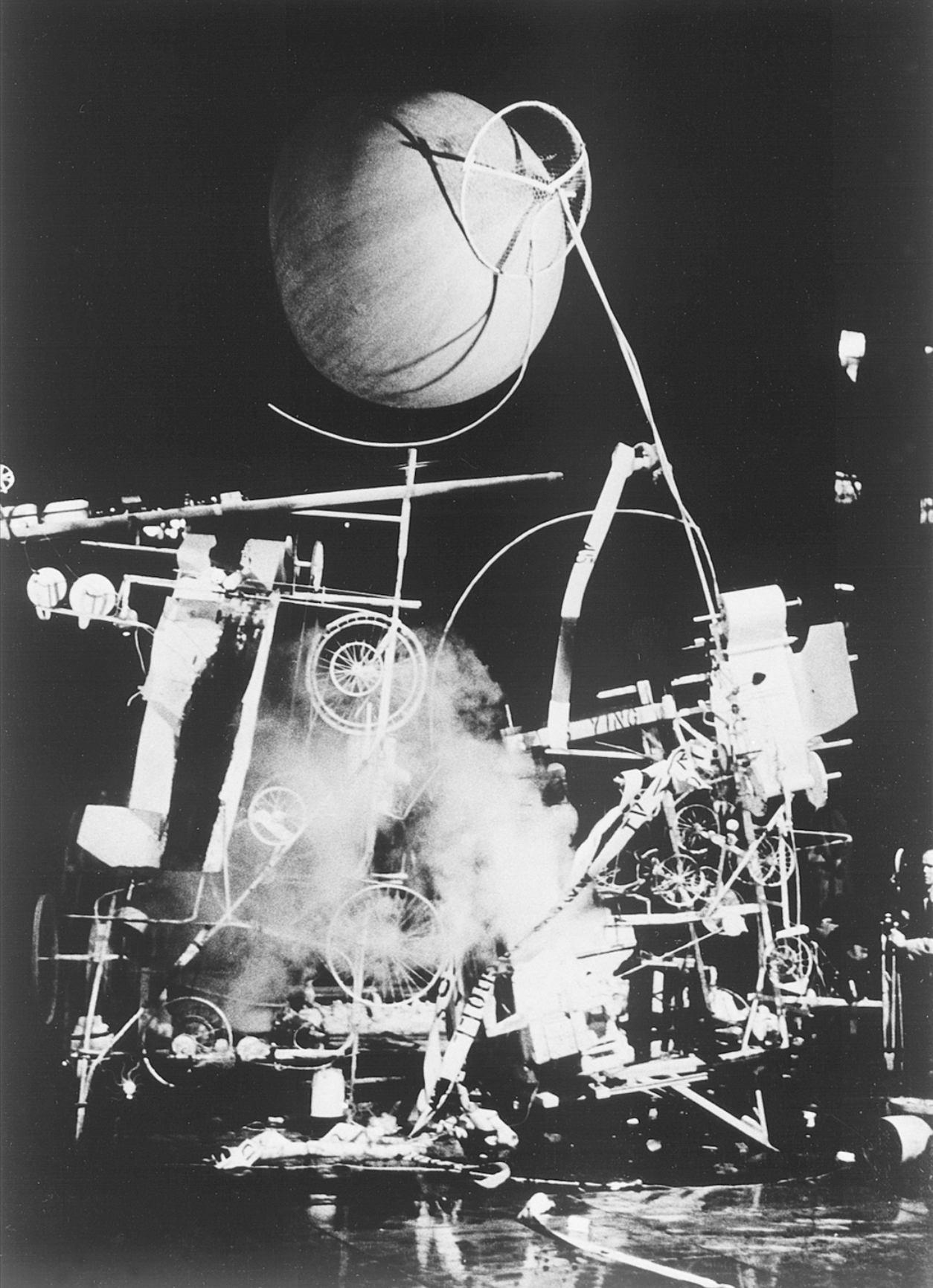 His pieces were born from a fascination with motion, how it could change perspectives and how it altered the way humans interacted with things. As is often the case with visionaries, he was first seen as a rebel by his peers. He was so uninspired by static paintings that he created one of his most famous kinetic pieces, the “Metamatic” (1959), which literally created abstract paintings at a rate of almost 20,000 per day! While he was decidedly unappreciated by his peers during his rise, the public was enamored by him. He created moving art from literal trash, discarded gears, metals, and motors that made his pieces whimsical and different. He even created pieces that literally destroyed themselves as they moved. His most famous work “Homage to New York” (1960) (pictured left), for instance, self-destructed in a bevy of light and sound that was meant to be a commentary on the over-value of technology in society - if he could only see us now! Joy in seeing his pieces by the public soon spread to his critics and kinetic art went mainstream. The movement has been a guide for inspiring modern artists ever since who continue to use springs, pulleys, motors and weights to create movements in their own works.
His pieces were born from a fascination with motion, how it could change perspectives and how it altered the way humans interacted with things. As is often the case with visionaries, he was first seen as a rebel by his peers. He was so uninspired by static paintings that he created one of his most famous kinetic pieces, the “Metamatic” (1959), which literally created abstract paintings at a rate of almost 20,000 per day! While he was decidedly unappreciated by his peers during his rise, the public was enamored by him. He created moving art from literal trash, discarded gears, metals, and motors that made his pieces whimsical and different. He even created pieces that literally destroyed themselves as they moved. His most famous work “Homage to New York” (1960) (pictured left), for instance, self-destructed in a bevy of light and sound that was meant to be a commentary on the over-value of technology in society - if he could only see us now! Joy in seeing his pieces by the public soon spread to his critics and kinetic art went mainstream. The movement has been a guide for inspiring modern artists ever since who continue to use springs, pulleys, motors and weights to create movements in their own works.
Kinetic art remains an excellent ambassador for art in general, as it generates a great deal of excitement and art is often underfunded and under-appreciated. Hype around a specific sector tends to increase interest and gives intellectual credibility to art as a whole. It makes all forms of artwork more accessible to people and allows a broader audience to enter the conversation. It also makes things more widely available so that shops like ours can provide exceptional kinetic artwork, buzz-worthy pieces with an heirloom quality, at price points that are extremely attainable for the everyday enthusiast.
Kinetic art really challenges our perceptions of what can be, it pushes our boundaries for what we think is possible and how we see reality. It is a literal representation of something that is constantly changing, that is constantly evolving, and it literally forces us to reevaluate it as it moves. It activates the brain as we try to make sense of what is happening right in front of us. It is jovial but still sophisticated, it is aesthetically pleasing and yet can also be mentally confounding - yes, all of that in a single piece of art that you can place on your wall and enjoy for many years to come.
 In modern times, as we find ourselves in constant motion, kinetic art seems to have become even more relevant to our lives. Tinguely’s sculptures and their commentary on technology gaining too much influence and dependency in society has become even more appropriate. The last several decades in the United States has seen an increase in the pace of the way we approach our day to day. We are constantly switched on, we are constantly moving, we are always engaged, we are always working, we are always scrolling. And so it follows that the artwork we create and that best captures our attention is also moving, engaging, working. None of this is a derogatory observation or meant to be a disparaging commentary on its existence, it is simply a clear and apropos example of the age old adage that art does indeed imitate life.
In modern times, as we find ourselves in constant motion, kinetic art seems to have become even more relevant to our lives. Tinguely’s sculptures and their commentary on technology gaining too much influence and dependency in society has become even more appropriate. The last several decades in the United States has seen an increase in the pace of the way we approach our day to day. We are constantly switched on, we are constantly moving, we are always engaged, we are always working, we are always scrolling. And so it follows that the artwork we create and that best captures our attention is also moving, engaging, working. None of this is a derogatory observation or meant to be a disparaging commentary on its existence, it is simply a clear and apropos example of the age old adage that art does indeed imitate life.
The kinetic sculptures that we offer here at the Giving Tree Gallery serve many purposes. They are independently beautiful and an example of that theme of art/life imitation, but they can also be extraordinarily functional in taking us out of the monotony of the rat race and constant activity. For example, when that piece sits turning gracefully on your wall, what better way to take a moment to connect to the present and engage in some restorative and organic meditation. It is hypnotic, in the sense that you can lose yourself in the rhythmic and repetitive movements as it turns, and hypnotic (at least in this situation) is good! By definition, the process of meditation and hypnosis require our attention to narrow, for us to focus and to significantly reduce the influence of peripheral awareness; it tapers our consciousness and allows us to escape our persistent attentiveness, our need to always be “on,” as it were.
The kinetic sculptures we carry are crafted from beautiful solid stained wood. The use of a natural material such as this creates a magical harmony between technology, art, and nature. When they aren’t in a state of motion the mounted sculptures present as interesting three-dimensional artwork that are still truly pleasing attention-grabbers. Layers of carved wood in various shapes and patterns are attached at the center of the piece, they are sandwiched together in such a way that when they do move, they do so in harmony with one another. You would be forgiven for thinking that their only talent is being still and interesting, until they are charged, of course. When they come to life it is a delightful surprise!
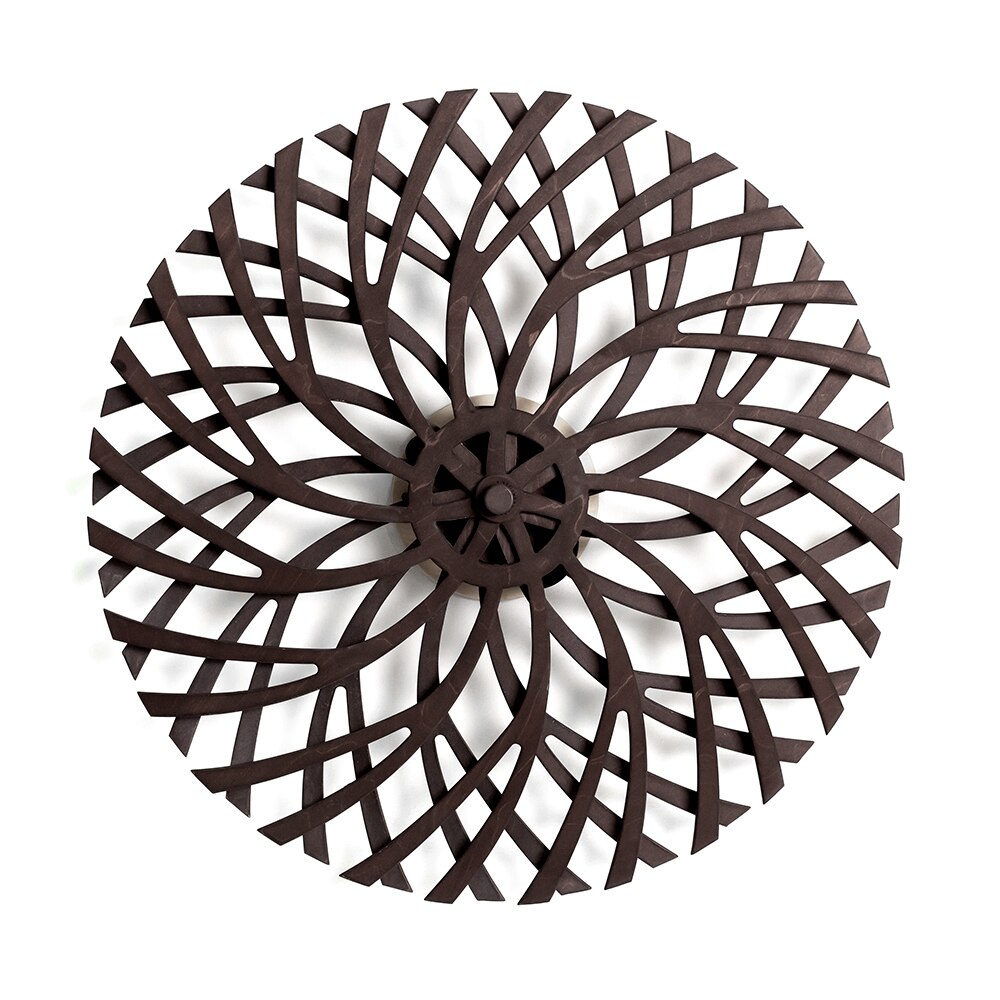 The way the pieces work is by being gently wound by hand for a short time, after which a small, hidden, spring-powered mechanism takes over and continues the soft turning motion for several hours. Yes, you read that correctly, for several hours. The wood layers rotate clockwise and counterclockwise against each other, passing by one another in rhythmic delight. Kinetic sculptures and the patterns they turn in are an amazing feat of engineering as much as they are wonderful art pieces. If any part of the process is off, if any of the equations are incorrect, the entire piece will no longer work as it should, forcing the layers to turn out of sync. They each require complex mathematical calculations in order to function properly and to continuously rotate in consonance with one another.
The way the pieces work is by being gently wound by hand for a short time, after which a small, hidden, spring-powered mechanism takes over and continues the soft turning motion for several hours. Yes, you read that correctly, for several hours. The wood layers rotate clockwise and counterclockwise against each other, passing by one another in rhythmic delight. Kinetic sculptures and the patterns they turn in are an amazing feat of engineering as much as they are wonderful art pieces. If any part of the process is off, if any of the equations are incorrect, the entire piece will no longer work as it should, forcing the layers to turn out of sync. They each require complex mathematical calculations in order to function properly and to continuously rotate in consonance with one another.
Another excellent feature of these pieces (much like most of the Giving Tree Gallery’s home decor items) is that they are able to suit nearly any decor style or design seamlessly. They can be both modern and traditional, industrial and cottagey, formal and rustic, all depending on the style and color of the sculpture you choose. Deep mahogany wood twisting in flowers (Labyrinth, pictured left) is perfect for the more classic or distinguished home, something a little more buttoned up, but still enticing. A combination of pale and deep green or red stained woods rotates in esses (Nautilida, pictured below) creating a shell-like shape and is perfect for the modern home that is craving a pop of color and levity. A combination of light and dark woods intertwining in teardrop swivels is a wonderful option for the more rustic abode that still presents as contemporary.
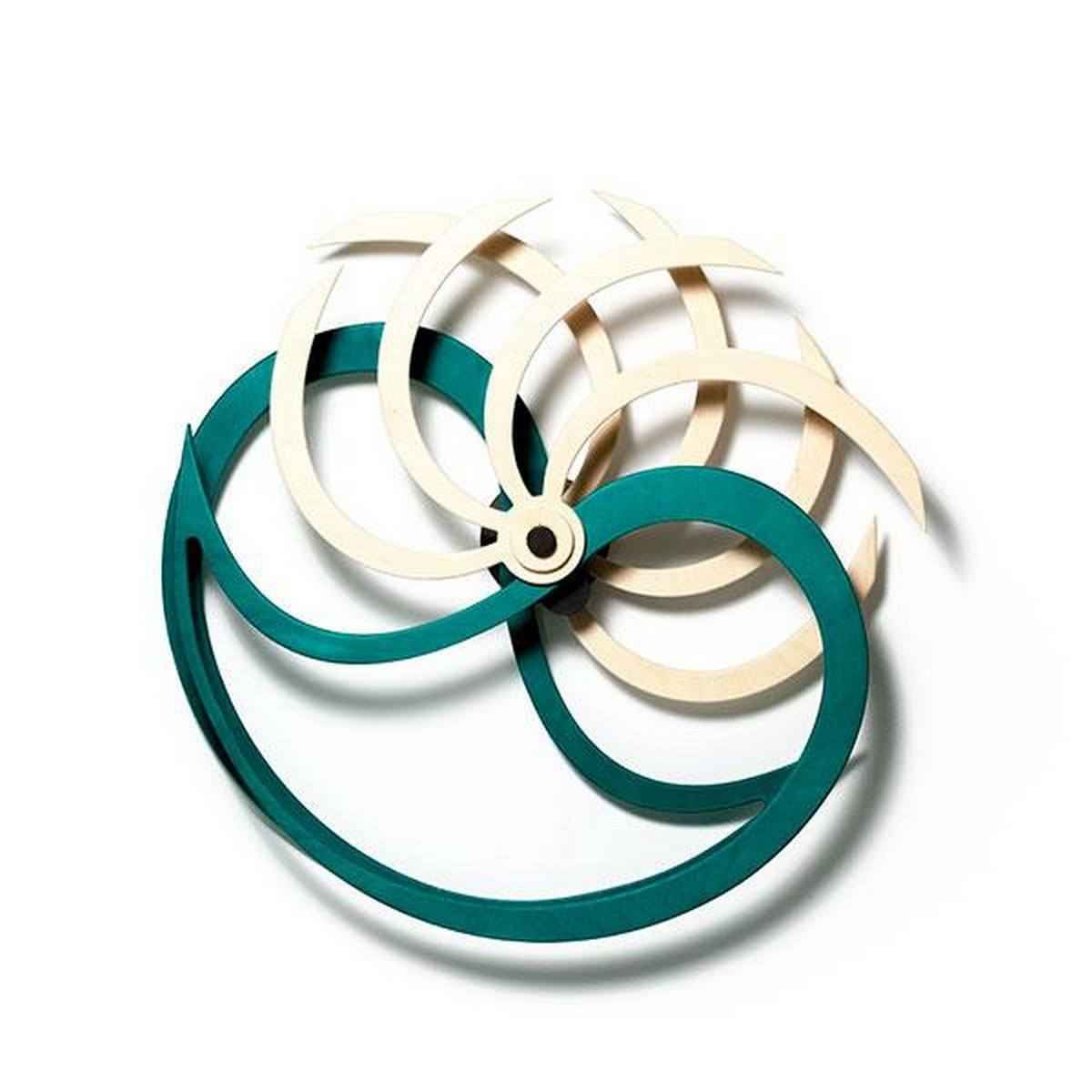 A sculpture such as this would make a wonderful and distinctive gift for friends or family for any occasion. They are appropriate for any celebration and they are a way to really show off and show up for someone who wants to make a splash in their space. They are versatile in their ability to please many personality type too, they are the gift that you can give to anyone, at any time, and are essentially guaranteed to impress. For instance, they really are cerebral; the mathematical and mechanical elements make them pleasing for your most logical (or flat out nerdy) friends. They are also playful with the spellbinding patterns and whimsy they create, making them a winner for the more free-spirited in your group! They are not limited to sex either, some see flowers twisting in the motion, others see diamonds or a yin and yang, so they really are able to morph to suit all personalities and people.
A sculpture such as this would make a wonderful and distinctive gift for friends or family for any occasion. They are appropriate for any celebration and they are a way to really show off and show up for someone who wants to make a splash in their space. They are versatile in their ability to please many personality type too, they are the gift that you can give to anyone, at any time, and are essentially guaranteed to impress. For instance, they really are cerebral; the mathematical and mechanical elements make them pleasing for your most logical (or flat out nerdy) friends. They are also playful with the spellbinding patterns and whimsy they create, making them a winner for the more free-spirited in your group! They are not limited to sex either, some see flowers twisting in the motion, others see diamonds or a yin and yang, so they really are able to morph to suit all personalities and people.
It seems fairly obvious to us why you would want to choose to adorn your home with a kinetic sculpture. Movement is interesting and fun, especially when it is presented in something that doesn’t normally do those things, such as sculpture. A piece such as this is unique and perfect for when you want to impress or to create a buzz about a space for others (and yourself). Having said that, the artwork can similarly lend itself to be more soothing if you want to create a space for yourself to relax and step away from the monotony of the day-to-day drudgery of simply existing in a world that is always awake and aware. There are few pieces that you can describe in that same manner, that faithfully check those two seemingly disparate boxes with ease and without trying to be one or the other. We love a good multi-functional art piece and we know that you will too!
Kinetic Art Sculptures Defined in Motion | Givingtreegallery.com



















